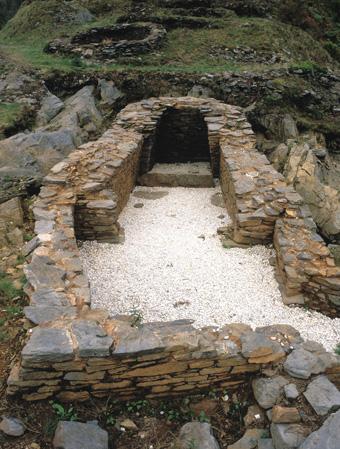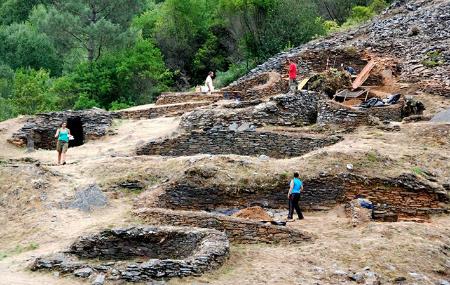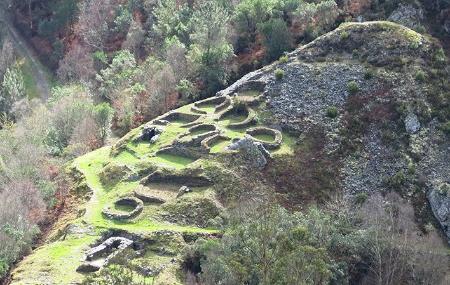
Pendia Hillfort
- Location Boal Western Asturias
- Address Address: ■ 33726 - Pendia
- Schedules and prices: View
- Documents Documents: Further information (PDF, 3566 KB)
Images
Info
The history of research into this small hillfort is directly linked to that of Castelón de Coaña, as they were excavated simultaneously in the early 1940s by Antonio García y Bellido and Juan Uría Ríu.
However, the first news of its existence is due to Bernardo Acevedo y Huelves, who in 1898 made an initial description of the ruins, which was expanded in 1929 by Alejandro García. In 1934, José Artime, a resident of Boal, carried out some excavations and, finally, in 1940, work began to exhume the rest of the settlement.
In 1999, the Regional Ministry of Culture of the Principality of Asturias undertook the re-excavation of the most important buildings as a preliminary step to the comprehensive consolidation of the site as part of the interventions programmed in the Archaeological Master Plan of the Navia Basin, work carried out under the direction of Fernando Rodríguez del Cueto and Ángel Villa Valdés.
The castro has been described as an enigmatic settlement due to the striking disproportion between the monumental fortifications (moats and walls) and the reduced enclosure they protected, in which barely a dozen huts have been exhumed.
Access is via a narrow path that leaves on the left the defensive moat that isolated the settlement from the rest of the mountain range. On its inner escarpment you can see the wall that ends in a tower at the highest point of the enclosure and from which you can enjoy a splendid view of the whole.
Inside, there are a dozen huts, circular or oblong in shape, among which the one located in the northern sector stands out for its size and isolation, built within an enclosure separated from the settlement by a second wall.
These large constructions are common in fortified settlements and are interpreted as buildings for communal use. Something similar to what happens with the two saunas. These are unique buildings, common in the Navia hill forts, with a rectangular floor plan, false vault roofs with a semicircular head in the oldest one and a quadrangular head in the second one.
The settlement was founded in the Iron Age (4th-1st centuries BC), although it was occupied until the 1st century AD under Roman rule.
Built in:1st century
How to get here
First Name: Pendia Hillfort
GPS: 43.432055,-6.772397
Address: ■ 33726 - Pendia
HOW TO GET THERE: Access signposted from the AS-12, as it passes through the village of Pendia PK19. Local road 2 km. Unconditioned track 1 km.
Pets allowed.




